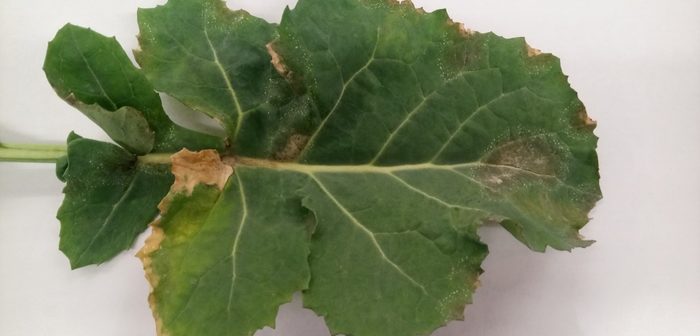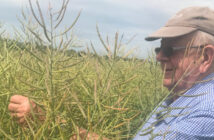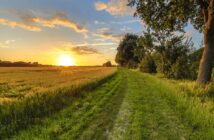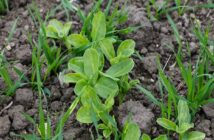Bayer’s SpotCheck initiative has opened for the 2021-22 growing season with a new, simplified sample pack request process. Oilseed rape growers and agronomists can request a sample pack direct from Bayer’s website. Leaf samples will be assessed by ADAS experts for signs of light leaf spot and other key diseases, with the results helping growers to adapt their fungicide programmes accordingly.
Light leaf spot is an airborne polycyclic disease, capable of several infection cycles each season. The severity and incidence of the disease varies from year to year and is driven by weather conditions. Temperatures between 4 and 20°C and wet conditions are ideal for infection and spread within the crop. It can be difficult to spot; tiny sugar-like spores can occur on either side of the leaf.
Rosalind Martin, Combinable Fungicide Campaign Manager for Bayer UK & Ireland says, “Fungicides perform best when applied in a protectant scenario against light leaf spot, so it’s important to get the timing right. If growers can get identify the disease in the early stages of infection, decisions can be made about fungicides in a timely way, to protect the crops yield potential through winter.”
Launched in 2017, SpotCheck has helped hundreds of growers to make better-informed decisions on autumn and spring fungicide applications. This year, the process has been simplified. To request a sampling pack, growers and agronomists just need to complete a short form via the Bayer website. A pack will arrive in the post direct to your preferred address, which can be returned to ADAS with leaf samples for analysis. Results will be emailed to you within 7 working days of leaves arriving at the laboratory.
The SpotCheck initiative is run in partnership with ADAS. Philip Walker, ADAS Arable Plant Pathologist explains that prevalence of light leaf spot in oilseed rape crops has been increasing since the initiative began. He says, “Traditionally, light leaf spot was mainly thought to be a disease problem for crops in the North of England and Scotland. However, results from samples assessed since 2017 have shown positive signs of disease from all oilseed rape growing regions, indicating that light leaf spot is now endemic across the UK.
“At the end of March 2021, light leaf spot was found in 59 out of 60 counties tested, covering most of the oilseed rape growing areas of England, Scotland and Wales. In addition, the number of samples that have tested positive has gradually increased year on year, despite the total number of samples received remaining roughly the same. In 2018 and 2019, 49% of samples tested were positive for light leaf spot, increasing to 68% in 2020, and 79% in 2021.” Explains Mr Walker.
The warm, wet winters of the previous couple of years have led to an increased incidence and spread of the disease. With the potential for a high amount of inoculum to be present this autumn, it serves as a reminder to growers to remain vigilant and regularly monitor crops.
For more on the SpotCheck initiative visit: https://cropscience.bayer.co.uk/bayer-spotcheck/




